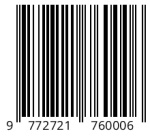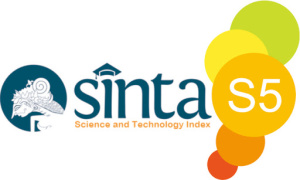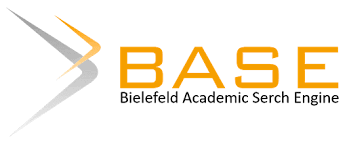IMPLEMENTASI METODE NAÏVE BAYES UNTUK PREDIKSI KELAYAKAN BANTUAN MODAL DAN KREDIT USAHA DI DESA SELAT ABIANSEMAL BADUNG
DOI:
https://doi.org/10.59819/jmti.v15i2.3985Keywords:
UMKM, Classification, Naïve Bayes, WebAbstract
Small, Micro, and Medium Enterprises (MSMEs) are small-scale businesses carried out by individuals or business entities with a certain amount of net worth and sales proceeds. MSMEs in Abiansemal Strait Village, Badung, still use manual methods in analyzing data. Conditions like this are the basis for this study to create a system that can help make it easier for the Abiansemal Badung Strait Village if there is an assistance program from the government, both business capital assistance, and business credit applications to be given to MSME actors. Naïve Bayes' method of classifying MSMEs is built on concepts explored from the interview process, literature studies and system implementation. The design of this system was made using the Python programming language. The CRISP-DM model is a system development method used in the classification of MSMEs. The Feasibility Prediction Model for Capital Assistance and Business Credit using the Naïve Bayes Method can make it easier for users to find out whether the existence of a web-based classification and recommendation system can make it easier for users to carry out the MSME classification process easily and users can see the solutions recommended by referral MSMEs that have better business conditions directly.
Downloads
References
Ailmi, N., Saharuna, Z., & Tungadi, E. (2020, October). Metode Klasifikasi Pada Aplikasi Pendukung Keputusan Untuk Pemilihan Unit Kegiatan Mahasiswa. In Seminar Nasional Teknik Elektro dan Informatika (SNTEI) (pp. 142-147).
Arta, I. K. J., Indrawan, G., & Dantes, G. R. (2016). Data Mining Rekomendasi Calon Mahasiswa Berprestasi Di Stmik Denpasar Menggunakan Metode Technique for Others Reference By Similarity To Ideal Solution. JST (Jurnal Sains Dan Teknologi), 5(2).
Bustami, B. (2013). Penerapan algoritma Naive Bayes untuk mengklasifikasi data nasabah asuransi. TECHSI-Jurnal Teknik Informatika, 5(2).
Huriah, D. A., & Nuris, N. D. (2023). Klasifikasi Penerima Bantuan Sosial Umkm Menggunakan Algoritma Naïve Bayes. JATI (Jurnal Mahasiswa Teknik Informatika), 7(1), 360-365.
Novriandy, A. (2023). Implementasi Algoritma Naive Bayes dan Algoritma C4. 5 dalam Klasifikasi Kelayakan Bantuan UMKM. KLIK: Kajian Ilmiah Informatika dan Komputer, 4(1), 208-217.
Rachman, R., Handayani, R. N., & Artikel, I. (2021). Klasifikasi Algoritma Naive Bayes Dalam Memprediksi Tingkat Kelancaran Pembayaran Sewa Teras UMKM. J. Inform, 8(2), 111-122.
Rifqo, M. H., & Wijaya, A. (2017). Implementasi Algoritma Naive Bayes Dalam Penentuan Pemberian Kredit. Pseudocode, 4(2), 120-128.
Sanjaya, U. P., Pribadi, T., & Prastya, I. W. D. (2022). Klasifikasi Dana Hibah Usaha Mikro Kecil dan Menengah dengan Metode Naïve Bayes. Indonesian Journal of Computer Science, 11(3).
Wijaya, G. (2023). Klasifikasi UMKM Menggunakan Algoritma Naive Bayes Berdasarkan Sudah Pernah Mempunyai Atau Mengurus Sertifikat Halal. Jurnal Data Mining dan Sistem Informasi, 4(1), 36-45
Downloads
Published
Issue
Section
License
Copyright (c) 2024 Setia, Gde Iwan Setiawan, Ida Ayu Putu Febri Imawati

This work is licensed under a Creative Commons Attribution-ShareAlike 4.0 International License.
Authors who publish with the Jurnal Manajemen dan Teknologi Informasi agree to the following terms:
1. Authors retain copyright and grant the journal the right of first publication with the work simultaneously licensed under a Creative Commons Attribution License (CC BY-SA 4.0) that allows others to share the work with an acknowledgment of the work's authorship and initial publication in this journal.
2. Authors are able to enter into separate, additional contractual arrangements for the non-exclusive distribution of the journal's published version of the work (e.g., post it to an institutional repository or publish it in a book), with an acknowledgment of its initial publication in this journal.
3. Authors are permitted and encouraged to post their work online (e.g., in institutional repositories or on their website) prior to and during the submission process, as it can lead to productive exchanges, as well as earlier and greater citation of published work. (See The Effect of Open Access) .





















